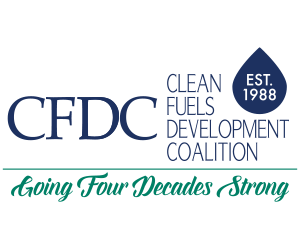Coalition Urges Administrator to Address Mobile Sources
September 6, 2022: In a detailed letter to the U.S. Environmental Protection Agency, the Clean Fuels Development Coalition (CFDC) called on the agency to use its existing authority to reduce toxic aromatics in gasoline as required by the Clean Air Act.
A pending rule to reduce fine particulate matter (pm) must include mobile source controls and address benzene and related toxics, according to the letter. The letter notes that EPA in its report to Congress in 2011 acknowledged the serious health impacts of particulates and the relationship between aromatic compounds like benzene and fine pm emissions.
EPA even stated in its 2007 Final MSAT Rule that “There may be compelling reasons to consider aromatics controls in the future, especially regarding reduction in secondary PM2.5 emissions.”
Fifteen years later, despite a growing body of evidence of the linkage between aromatics/BTEX (Benzene, toluene, ethylbenzene, xylene) and fine pm emissions, EPA has refused to comply with the mandatory, technology-forcing Congressional requirement: As stated in the Clean Air Act, EPA’s air toxic controls must “reflect the greatest degree of emission reduction achievable through the application of technology which will be available.”
The compelling reasons are certainly evident, said Doug Durante, CFDC Executive Director. ”High aromatic content in today’s gasoline and studies like the General Motors’ recent conclusion that 96% of fine particulates from gasoline come from aromatics makes it clear where the focus needs to be,” he said.
The letter documents that the rapid adoption of gasoline direct injection (GDI) engines has improved efficiency but has the unintended consequence of increasing fine PM emissions, again tied directly to the aromatic content.
CFDC concludes by making the case for a transition from E10 to a high octane low carbon fuel such as an E30 blend that would achieve several critically important objectives:
- Substantially reduce fine and ultrafine particulates and their associated toxics;
- Substantially reduce tailpipe carbon emissions (widespread use of E30 HOLC fuels would reduce transport sector carbon/black carbon emissions by at least as much as EPA’s recent LDV GHG rule, within years rather than decades).
- Consumers and taxpayers would save hundreds of billions by substantially reducing the use of imported oil and carcinogenic BTEX.
- EPA would finally comply with several laws that have thus far defied solution, including the RFS, MSAT, and GHG – CAFE challenges, by relying upon natural marketplace forces as lower-cost, lower-carbon ethanol displaces higher-cost, carbon-intensive, and toxic BTEXFor Further Information Contact: Doug Durante, cfdcinc@aol.com | 301 537 8830
